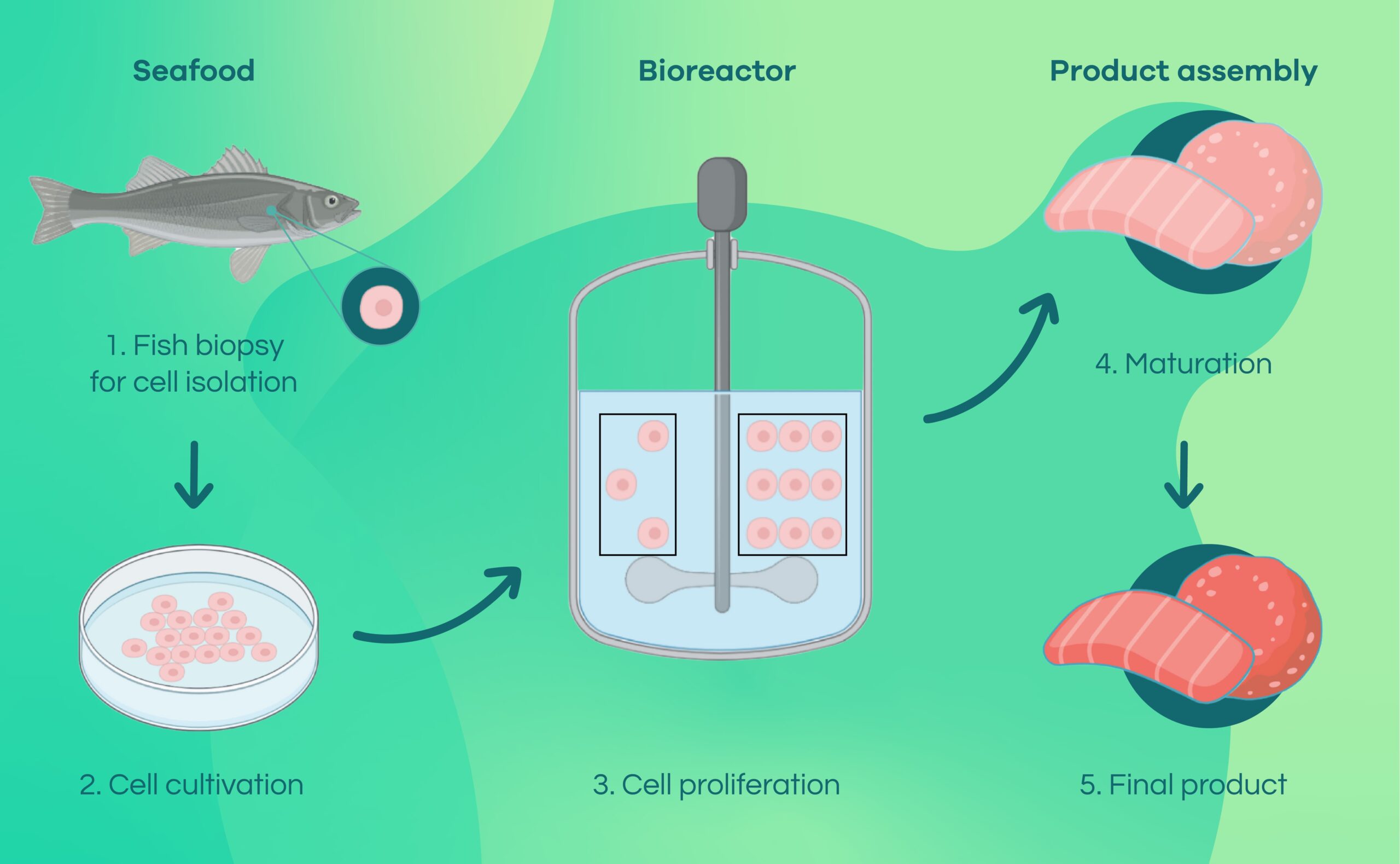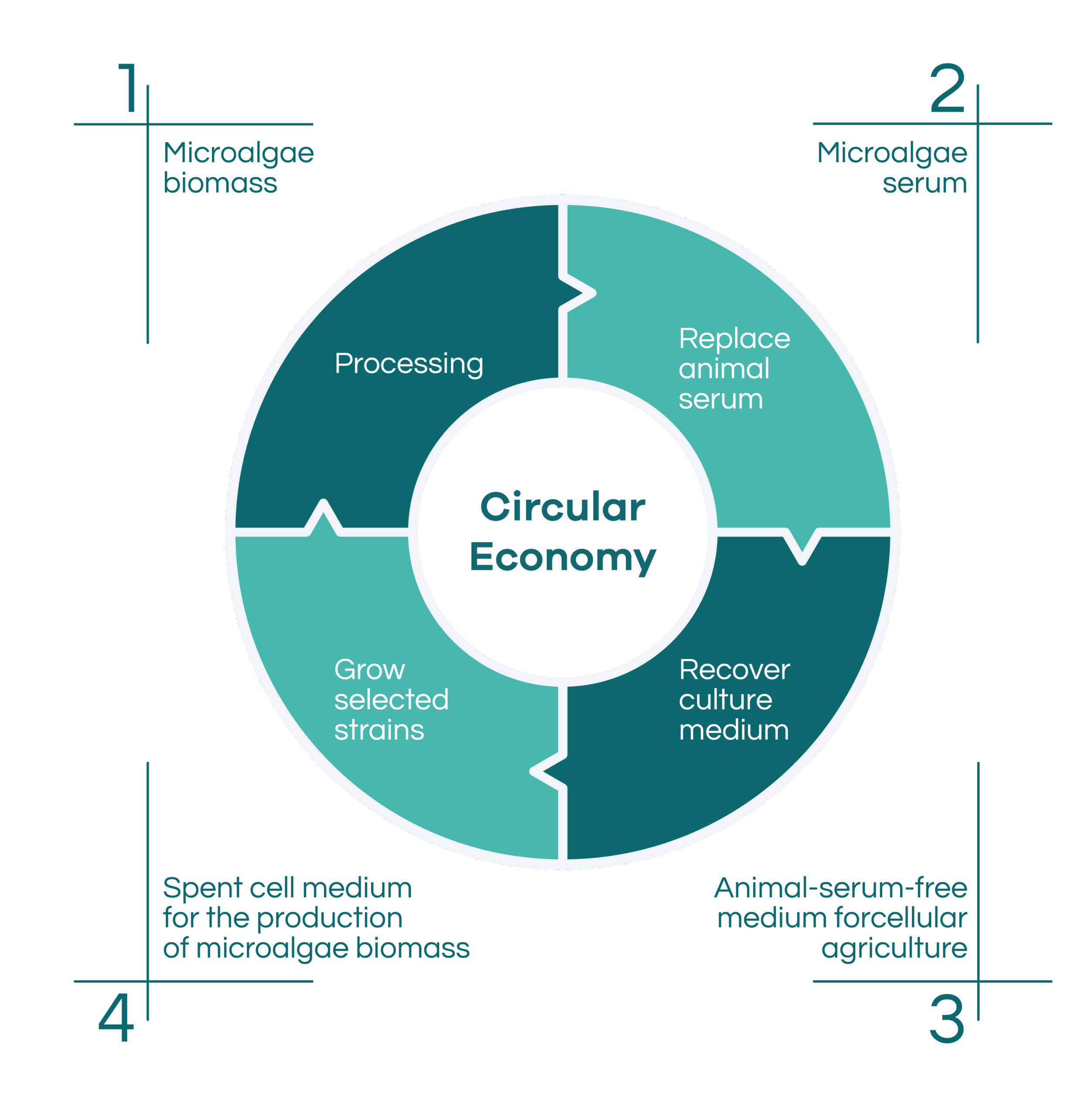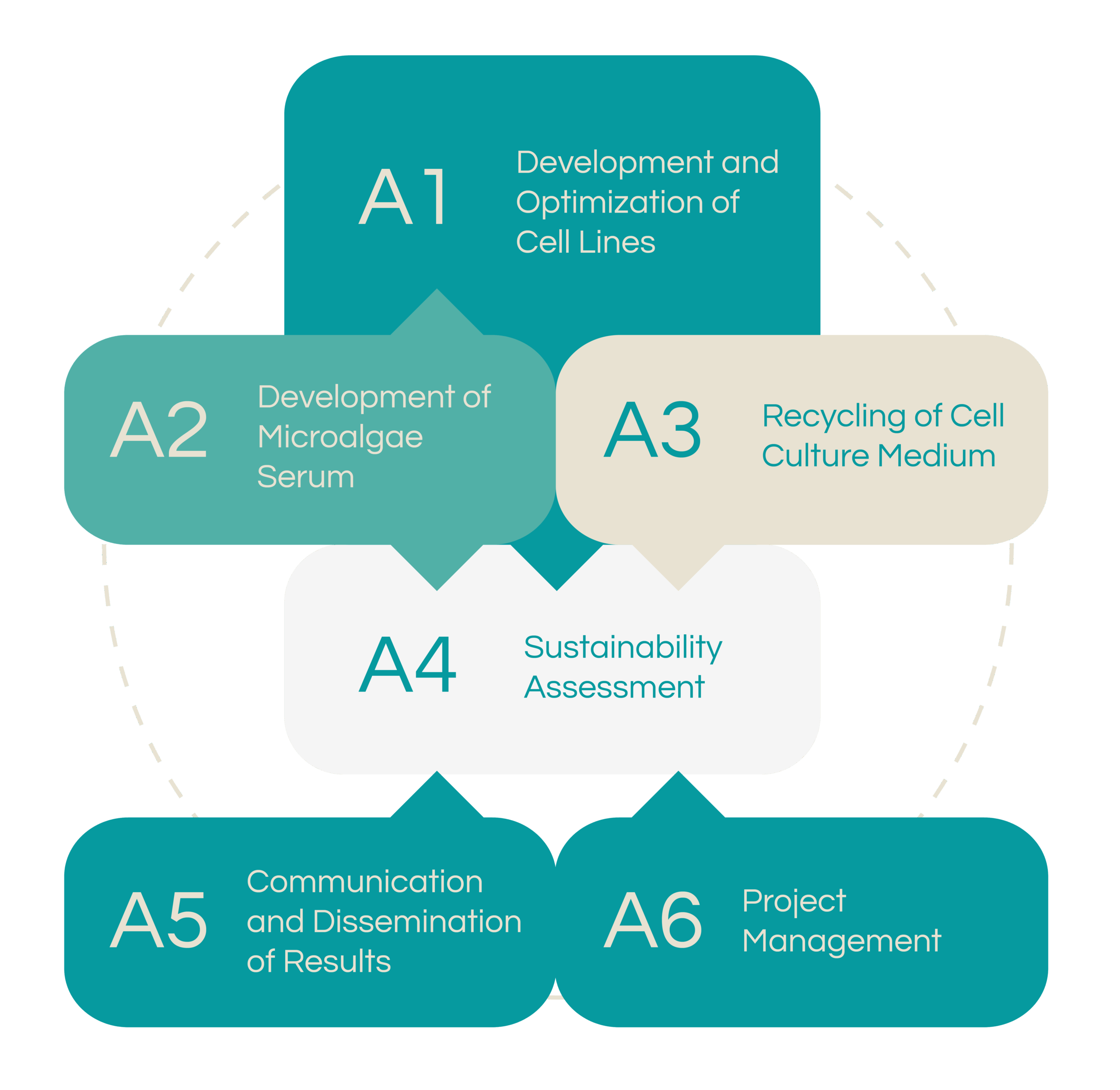ABOUT INOVACEL
INOVACEL is a research project that proposes an innovative approach to the production of marine proteins using cellular aquaculture, a technology that allows fish and marine invertebrate cells to be cultivated in a controlled environment, eliminating the need for animal slaughter and reducing pressure on marine ecosystems.
Focused on the global challenges of food security and environmental sustainability, the project is committed to a technically advanced solution with ethical, ecological, and nutritional benefits.
Based on the principles of blue biotechnology and the circular economy, INOVACEL integrates cell culture techniques with bioactive ingredients derived from microalgae, promoting a production model with reduced environmental impact and high added value.
Through coordination between research centers, companies, and laboratories of excellence in the Algarve, the project is at the forefront of the transition to more resilient, efficient, and responsible food systems.
Cellular Aquaculture

Cellular aquaculture is an emerging technology that enables the production of marine animal proteins from cell cultivation, without the need for fishing, intensive farming (traditional aquaculture), or animal slaughter. Using tissue engineering and biotechnology, cells are cultivated in controlled environments, resulting in products that are nutritionally equivalent to conventional fish.
This approach significantly reduces environmental impact, minimizes the use of natural resources, eliminates non-edible waste, and drastically shortens production cycles—from years to weeks. Furthermore, it enables modulation of the nutritional profile, such as removing allergens or adding functional compounds, promoting a safe, ethical, and sustainable source of animal protein.
OUR OBJECTIVES
These objectives aim to establish a new paradigm in marine animal protein production that is more ethical, resilient, and environmentally responsible, aligned with the principles of the circular bioeconomy.
01.
Develop and optimize cell lines derived from marine organisms, cultivated in animal serum-free media, ensuring ethical, safe, and environmentally sustainable production.
02.
Produce sustainable alternatives to animal serum from microalgae, reinforcing the technical feasibility, cost reduction, scalability, and environmental performance of cell culture systems.
03.
Implement bioremediation processes using microalgae to treat effluents from cellular aquaculture by removing nitrogen and phosphate compounds from spent cell medium, allowing water to be reused in the production process.
04.
Integrate circular economy strategies, linking microalgae production with cellular aquaculture, with a view to recovering waste and increasing the efficiency of bioproductive systems.
05.
Assess the environmental and economic impacts of the integrated system through Life Cycle Assessment (LCA) and Technical-Economic Assessment (TEA), ensuring its sustainable viability and long-term competitiveness.
The INOVACEL project incorporates the principles of the circular economy to develop more sustainable and ethical cellular aquaculture. Instead of relying on linear methods and animal-based resources, INOVACEL promotes a sustainable, efficient, and regenerative cycle based on the use of microalgae.
The process begins with the controlled cultivation of microalgae biomass (1). This biomass is then processed to obtain microalgae-derived sera (2), which function as substitutes for fetal bovine serum in cell culture media (3). After the cell culture phase, the culture medium is recovered (4) and reused as a substrate for the growth of new microalgae, thus closing the cycle.

Project Organization

A1.
Objectives:
Tasks:
1.1. Establishment of cell lines in animal serum-free culture medium
1.2. Optimization of cell differentiation processes
1.3. Optimization of culture conditions to increase proliferation
1.4. Transition to suspension culture and scale-up in bioreactors
1.5. Evaluation of the nutritional profile of cell biomass
1.6. Cryopreservation of cells and definition of SOPs
A2.
Objectives:
Tasks:
2.1. Assessment of the replicability of production and consistency of microalgae profiles
2.2. Assessment of microalgae processing for serum production
2.3. Establishment of SOPs for microalgae culture and processing
A3.
Objectives:
Tasks:
3.1. Laboratory-scale microalgae production using cell culture effluent
3.2. Scaling up microalgae production in cell culture effluents
3.3. Identification of the nutritional and biochemical profile of microalgae biomass
3.4. Analysis of recovered water quality parameters
A4.
Objectives:
Design an integrated microalgae and cell production system applying circular economy principles;
Assess and quantify environmental impacts using Life Cycle Assessment (LCA) methodologies;
Evaluate and quantify the economic performance of processes through Technical-Economic Analysis (TEA).
Tasks:
4.1. System design for sustainability assessment
4.2. Life Cycle Assessment (LCA): assessment of the environmental impact of products and processes, including extraction, production, transportation, use, and end of life of raw materials
4.3. Technical-Economic Assessment (TEA): analysis of the feasibility and performance of the technology/process, including cost-benefit analysis
A5.
Objectives:
Effectively disseminate research results to stakeholders;
Promote knowledge exchange and socioeconomic impact through accessible and comprehensive dissemination activities.
Tasks:
5.1. Communication and dissemination of project results
A6.
Objectives:
Ensure the correct management of the project and consortium, focusing on the quality of results;
Ensure technical and financial management, as well as scientific coordination of the project, guaranteeing innovation and technological relevance.
Tasks:
6.1. Technical and administrative management of the project
If you have any questions, would like to know more about the ongoing research, or explore possibilities for collaboration, please do not hesitate to contact us. The INOVACEL team is available to answer scientific, technical, or institutional questions.
Funded by:

Copyright © 2025 INOVACEL